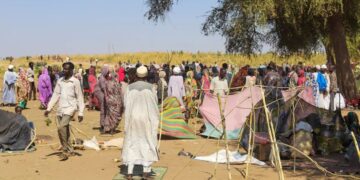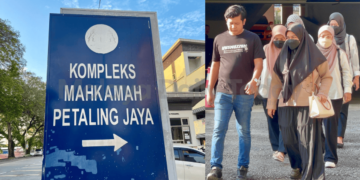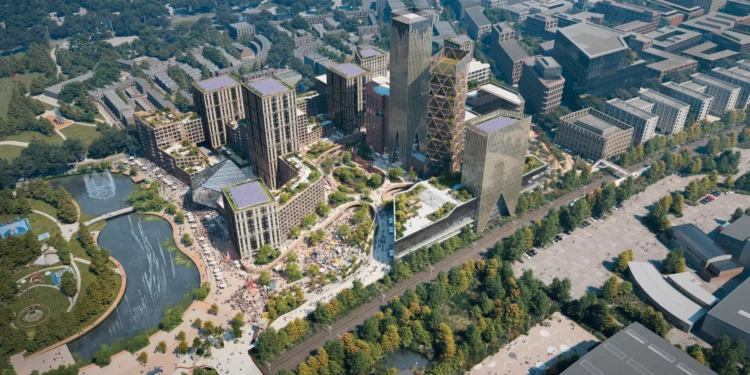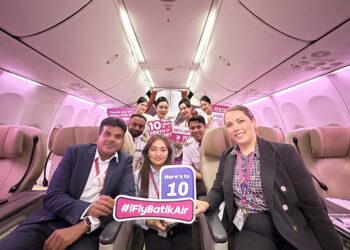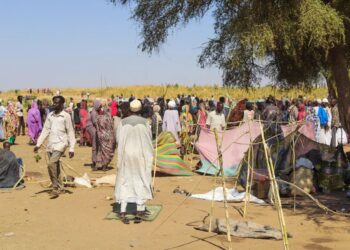UNITED KINGDOM – Stand at the edge of the cavernous hangars at Filton airfield and you can still picture the outlines of Concorde, the plane that here rewrote the rules of aviation, making supersonic air travel a reality.
Today, the same airfield from which the first British Concorde made its maiden flight is being repurposed into another bold experiment: Brabazon, a town being built to the north of Bristol.
Last week a government taskforce named Brabazon as one of 12 locations in its vision for the next generation of new towns.
This initiative has echoes of the postwar era, when new towns such as Stevenage and Milton Keynes were designed to house a booming population.
While some of the new towns listed may need investment, Brabazon is the biggest privately funded, single-developer brownfield site in the UK, buoyed up by a £2 billion investment from YTL Corporation, a Malaysian conglomerate that bought the airfield from BAE Systems in 2015.
Thomas Heatherwick: Would you go to a new town on a date?
Brabazon may not be desperate for cash, but its developer is overjoyed with its inclusion in the new towns list because it opens access to government support for the transport links it needs to expand.
At present planning allows for 6,500 homes, but with new town designation it could deliver up to 25,000, centred around a 20,000-capacity concert venue in one of the former aircraft hangers, which will be bigger (in square footage) than the O2 Arena in London.
The story of Brabazon begins with the site’s history. Filton has been synonymous with aviation since Sir George White established the British and Colonial Aeroplane Company in 1910.
Fighter planes rolled from its sheds during the First World War; Spitfires and Hurricanes during the Second World War.
Later the site became home to the huge Brabazon airliner and then to the Concorde, every British model of which was built here.
When Concorde was retired in 2003, one jet, Alpha Foxtrot, was brought home to Filton. It is housed in the British Aerospace Museum adjacent to the 400-acre Brabazon site and was the setting for the raunchy mile-high bonk scene that opened Rivals, the Jilly Cooper book adaptation that romped on to Disney+ this year.
The site’s aviation heritage will be celebrated in the new town with streets named after aerospace workers, slanted roofs that recall tail fins, and historic hangars being adapted into cultural venues. YTL is in talks with corporate sponsors for the new arena, which is planned to open in 2028. Renders feature Taylor Swift’s Eras tour on the hoardings: a nod to the calibre of performer expected to play there.
It is part of a wider entertainment district with high-rise hotels, student housing and an enterprise campus: a model reminiscent of Greenwich Peninsula’s revival around the O2 Arena. The site will also be home to the largest new urban park created in the southwest for 50 years: the 15-acre Brabazon Park, which will also have a lake.
Waitrose has already signed on to open a store there (with office space above), and its executive director James Bailey called Brabazon “one of the most exciting new city districts in the UK”. Sebastian Loyn, head of planning and development at YTL, is clearly thrilled with the endorsement of what he calls “a great British institution”.
How to build a new town — and avoid the pitfalls of the past
Poached from his own studio to mastermind the project, Loyn lives in Brabazon with his wife, son and their black labrador, who barks enthusiastically as we pass by the house the family rents. Soon, however, they will relocate to Redland, just east of Clifton, because dreaming up, working and living in the same place is proving to be “a bit much”. “My wife did need convincing [to live here],” he admits, “but now she doesn’t want to leave.”
Already, more than 350 homes are occupied and there are an estimated 800 residents. Two, three, four and five-bedroom houses sit alongside seven-storey apartment blocks. The designs aim to attract those used to the proportions of Georgian terraces in Bristol and Bath, with double-height ceilings and integrated two-car garages that can be converted into extra living space once the transport links arrive.
More than £100 million is being spent on these links, including a railway station linking Brabazon to Bristol Temple Meads in less than 15 minutes, which is expected to arrive in autumn 2026. A bus service will run straight through the town, while cycle lanes and walking routes will thread through its green spaces. A “Circle Line” bus route has been proposed to improve links between the town and the wider city, reducing car dependency.
Wheelie bins and air source heat pumps are tucked neatly into wooden boxes outside the houses, and Airbnb-style short lets are banned to ensure that residents, not weekend concertgoers, shape the community.
All this means the homes are being sold at a premium compared with other local new-builds — about £100,000 more on average, Loyn estimates. A four-bedroom mid-terrace in the Hangar District is reserved at £560,000; a two-bedroom end of terrace in the Heritage District is listed at £440,000. The remaining flats on sale at The Dials range from £317,000 to £365,000.
More than 1,700 homes have been earmarked as affordable, a figure that may rise now Brabazon has secured new town status.
One of the advantages of building on a disused airfield, apart from heritage, is the space: unlike some other new towns, no existing settlements will have to be destroyed or amalgamated and the planners can design it virtually from scratch.
“No one was previously walking their dog down the runway. In fact, you used to have to drive down the runway to get to the site,” says Charlotte Hanna, group head of external affairs at YTL.
Until that essential transport arrives, Brabazon feels a little cut off from Bristol. Today, trails of blue paw prints snake around the brick terraces, part of a Wallace and Gromit-themed trail designed to entice families to explore the area (Aardman Studios is based in Bristol).
But there is the sense of a town in the making: the placeholder pop-up town centre, called Meanwhile, will be stocked with fledgling local businesses banking on the area’s success. Some of these makeshift shops are currently trading from Boxworks, a cluster of shipping containers off Hayes Way, next to the aerospace museum, which were decorated by contestants in the latest series of the BBC show Interior Design Masters. (Some of the businesses have kept their fit-out but others have redecorated.)
It is hoped that some of these entrepreneurs will move over to Meanwhile, opposite the student housing, and then blossom into City Green, the finished town centre.
“I’m paying about £400 a month less than I was in the last shop I had in Bristol,” says Seb Vaughan-Jones, the owner of Barber Box, who works from a container studio with his assistance-dog-in-training, Eddie. “As the site grows, I’m getting more customers. All the businesses here are in the same boat, so we’re all buying off each other and promoting each other all the time.”
Others see the chance to plug gaps in the area. Tiziana Cerulla, a native Bristolian, moved to Italy to help her family run a 300-cover restaurant on the Adriatic coast, but returned to the UK for the chance to run a smaller business, Impasta Lab, where she has time to make fresh pasta. “There is really nothing independent in this part [of north Bristol], it’s a bit of a black hole for great food,” she says. “So I see a lot of opportunity here.”
New towns will be boring, soulless and full of roundabouts, say voters
YTL has also chosen a beloved local business, Mokoko, a bakery in Bristol and Bath, to open a flagship café inside one of the restored hangars, which will be community-focused with a gym, hall and farmers’ market.
South Gloucestershire has some of the highest house-price-to-income ratios in the country, with median-priced homes costing more than eight times the average salaries. Bristol struggles with congestion and boundaries that hem in expansion. Brabazon, sitting six miles from the city centre, is a release valve, and one the government believes could deliver 700 homes a year if infrastructure is unlocked.
The west of England economy is worth more than £53.7 billion and has one of the highest employment rates in Britain. This area is already home to Airbus, Rolls-Royce and GKN, forming an ecosystem of advanced engineering and research.
More flexible workplaces are also allowing people to try out new areas. One of Loyn’s neighbours, for instance, who works for a technology company, lives in Brabazon but flies to Silicon Valley for one week a month.
Yet growth is constrained by limited housing and poor transport. “This new town would capitalise on existing overseas investment,” the government’s report notes, “and further maximise value for money of the recently announced £752 million investment to support public transport and active travel in the west of England.”
Clearly Brabazon has a lot more to offer than only housing: with new town designation the promise is also space for 30,000 jobs and £5 billion worth of social infrastructure, including three new schools, a GP surgery, and a library.
While explaining the rationale behind the streetscape, Loyn said the design “was really about getting parked cars off the street, which is what you tend to see in a lot of new ‘housing estates’”. He shows that there is still a stigma associated with new towns: often they are seen as soulless spreads of identikit homes.
While there will be plenty for Bristolians to sample here in the next few years, only time will tell whether Brabazon becomes more than simply another commuter suburb — rather, a town built to reflect both its past as the birthplace of Concorde and its future as an engine of growth. -TheTimes


